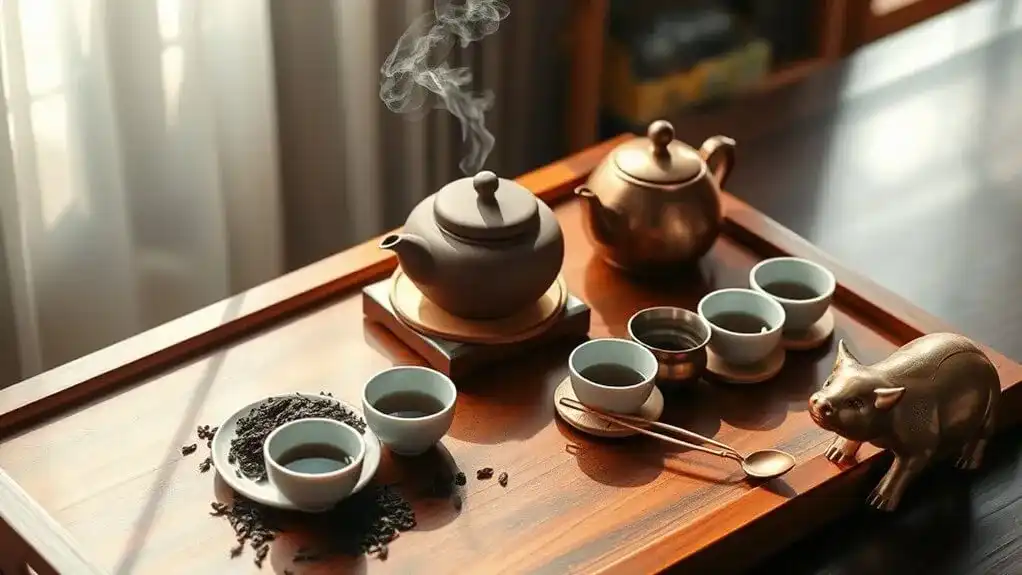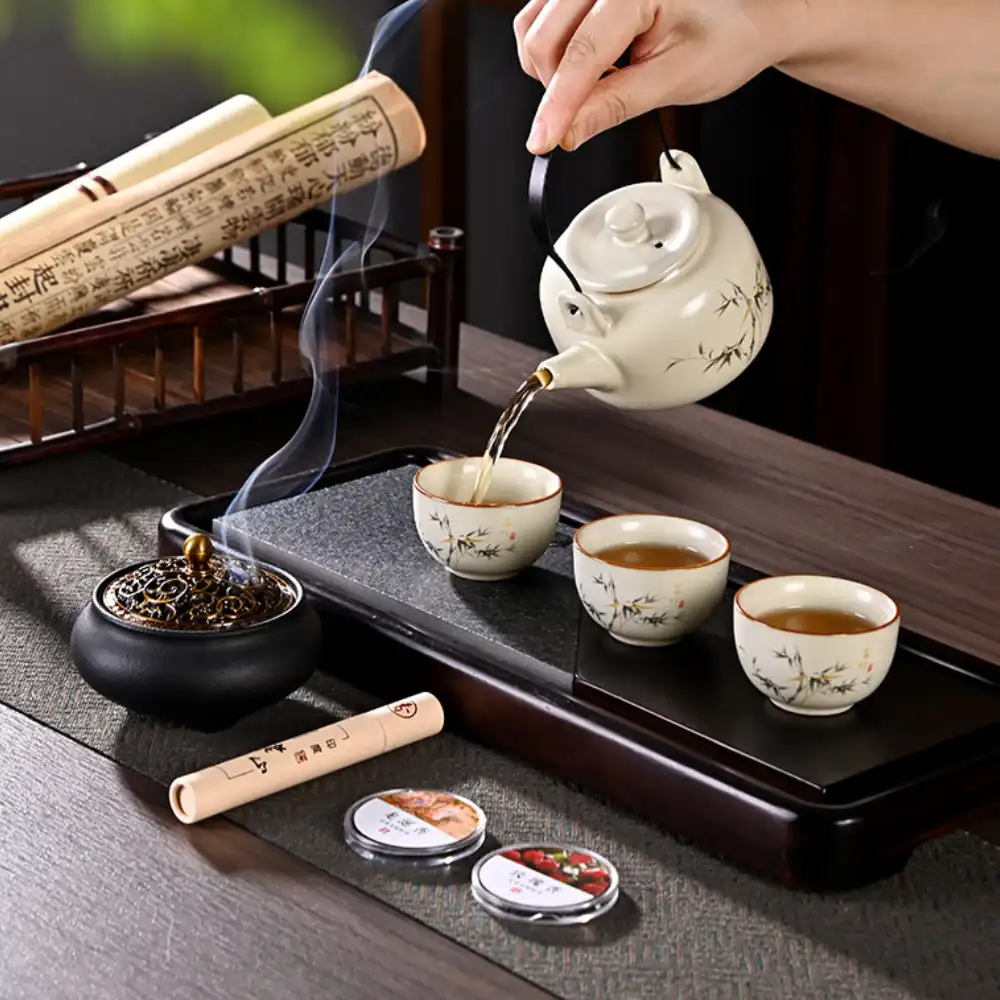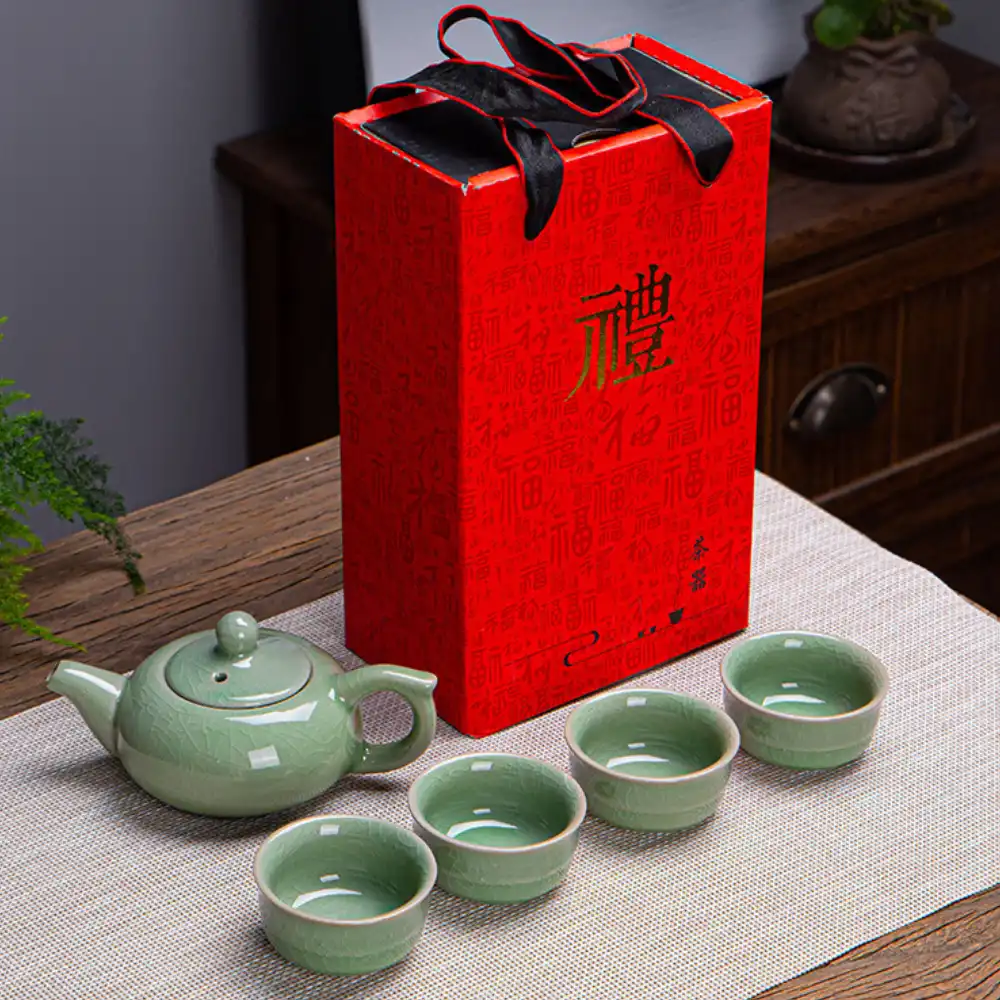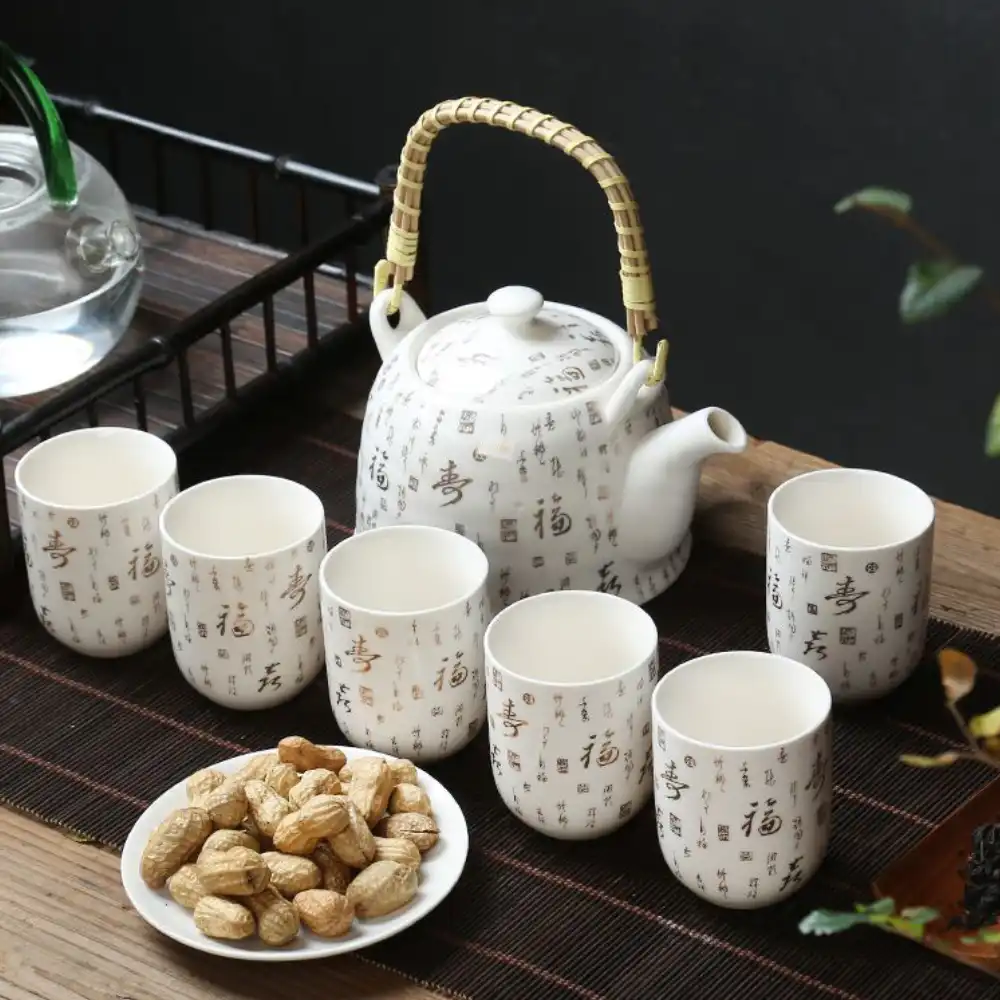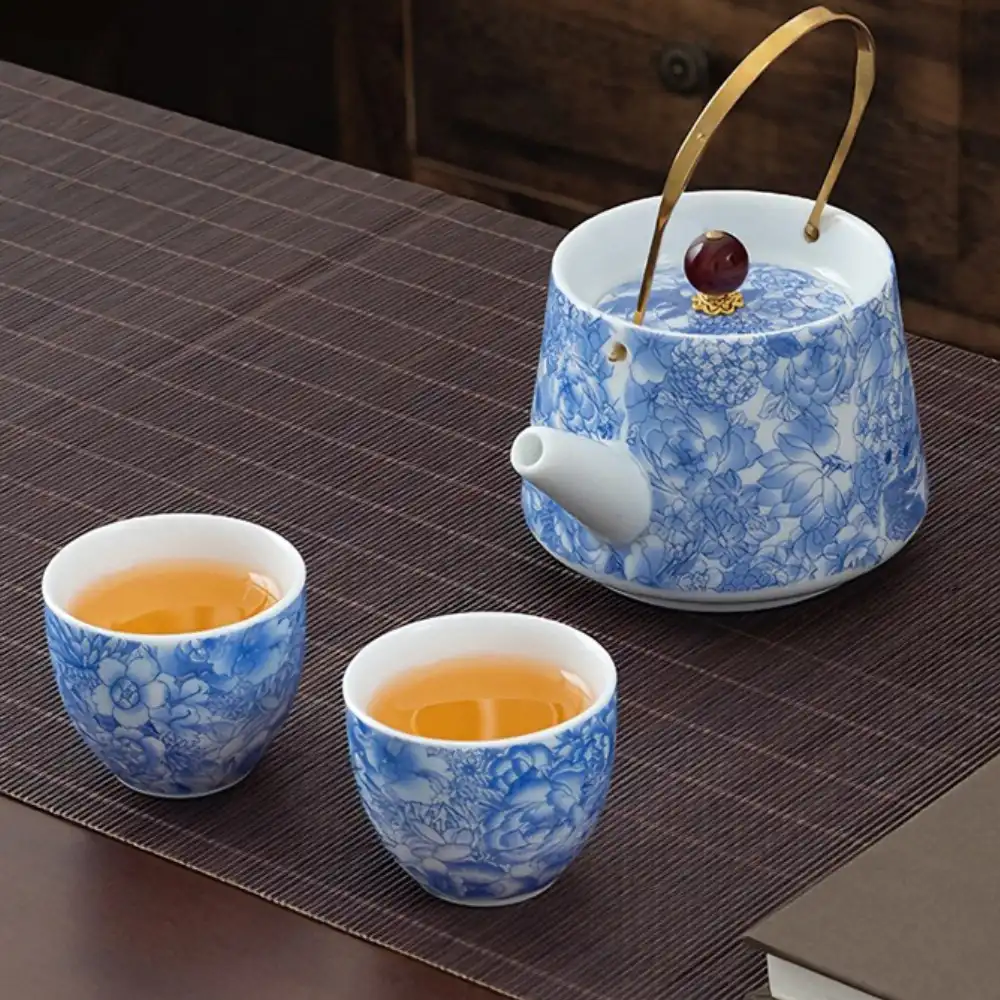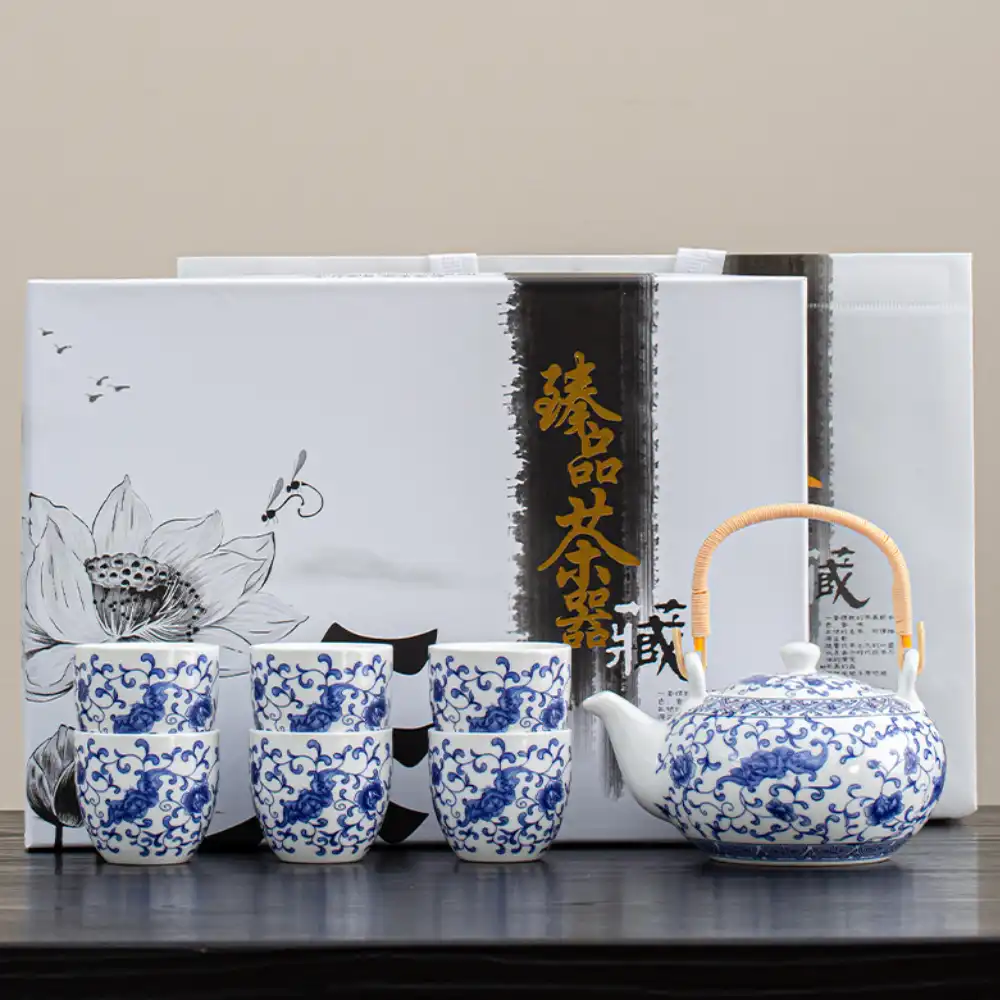Gongfu Cha is China's traditional tea ceremony that combines artful preparation with precise brewing methods. It emerged from Chaozhou city over 200 years ago and uses specific tools like Yixing clay teapots, gaiwans, and fairness cups to extract ideal flavors from premium teas. The practice emphasizes mindfulness and appreciation through controlled variables like water temperature and steeping time. This time-honored ceremony offers layers of complexity that reveal themselves through proper exploration and practice.
Key Points
- Gongfu Cha originated in Chaozhou, China, emphasizing precision brewing with high leaf-to-water ratios and short steeping times.
- Essential tools include teapots, gaiwan, fairness cup, and accessories designed for optimal flavor extraction and consistent results.
- Premium tea varieties from Camellia sinensis are selected based on processing methods, regional characteristics, and distinct flavor profiles.
- Multiple short infusions using controlled water temperatures reveal different layers of the tea's character throughout the ceremony.
- The practice combines practical brewing techniques with mindfulness, creating a refined expression of traditional Chinese tea culture.
The Rich History and Origins of Gongfu Cha
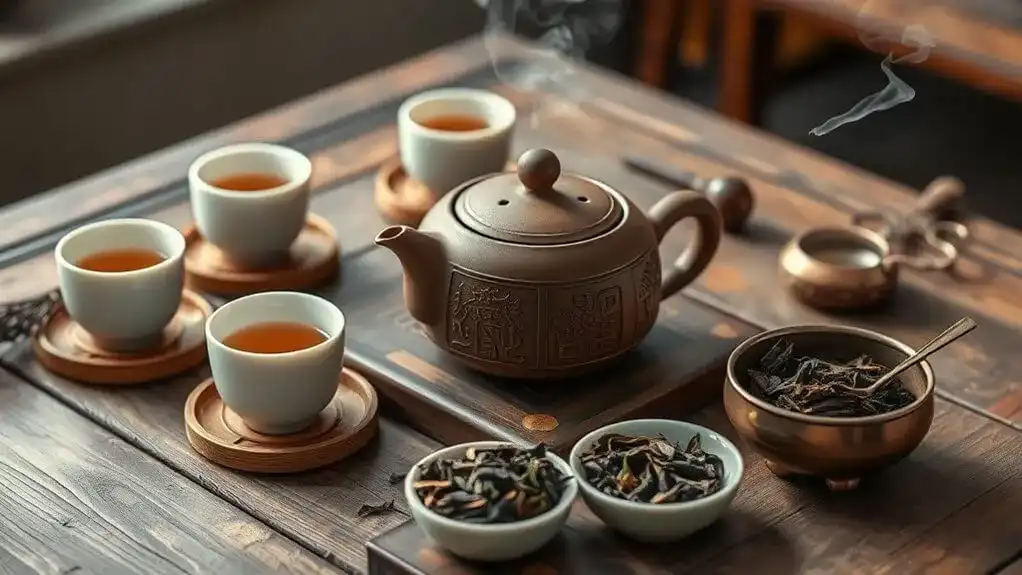
Tea mastery finds its roots in Chaozhou city, located in China's southeastern Guangdong province, where Gongfu Cha first emerged. This unique cultural heritage developed within the past 200 years, with earliest records dating back to 1792. While tea ceremonies have been central to Chinese civilization for millennia, Gongfu Cha's distinctive approach evolved independently of imperial traditions. Ancient medicine men and poets extensively documented tea's properties throughout history. Unlike Japan's more ceremonial approach, Gongfu Cha emphasizes practical preparation techniques.
The historical influence of various regions shaped Gongfu Cha's development, particularly in the Wuyi Mountains and Taiwan. Unlike Japan's structured tea ceremony, which emerged in the 16th century, Gongfu Cha evolved organically without a single creator. Taiwan played a pivotal role in its modern expansion, spreading the practice throughout mainland China through tea shop investments. Tea arts in Taiwan were deeply influenced by both Chinese and Japanese practices during its development. Today, this once-regional tradition has gained recognition nationally and internationally as a refined expression of Chinese tea culture.
Essential Tools and Teaware for the Traditional Service

A proper Gongfu Cha service requires specific tools and teaware, each serving distinct functions in the ritual. At the heart of the service lies the teapot, available in various materials like glass, porcelain, clay, and cast iron, each suited for different brewing techniques. Traditional Yixing clay pots are particularly prized for their ability to retain the flavors and aromas of tea due to their porous nature. The gaiwan and fairness cup guarantee consistent flavor distribution, while small teacups allow multiple participants to enjoy the tea equally. Small teapots are ideal for multiple infusions throughout the service.
Essential accessories include the tea scoop for precise measurements, tongs for hygienic handling, and cleaning tools like the tea needle and brush. The cha hai and tea jars help control steeping time and maintain proper storage. A digital tea scale ensures precise measurement of tea leaves for optimal brewing results. Supporting elements such as runner cloths, candles, and tea pets enhance the ceremony's aesthetic appeal, creating a harmonious environment for the traditional tea service.
Selecting and Understanding Premium Tea Varieties
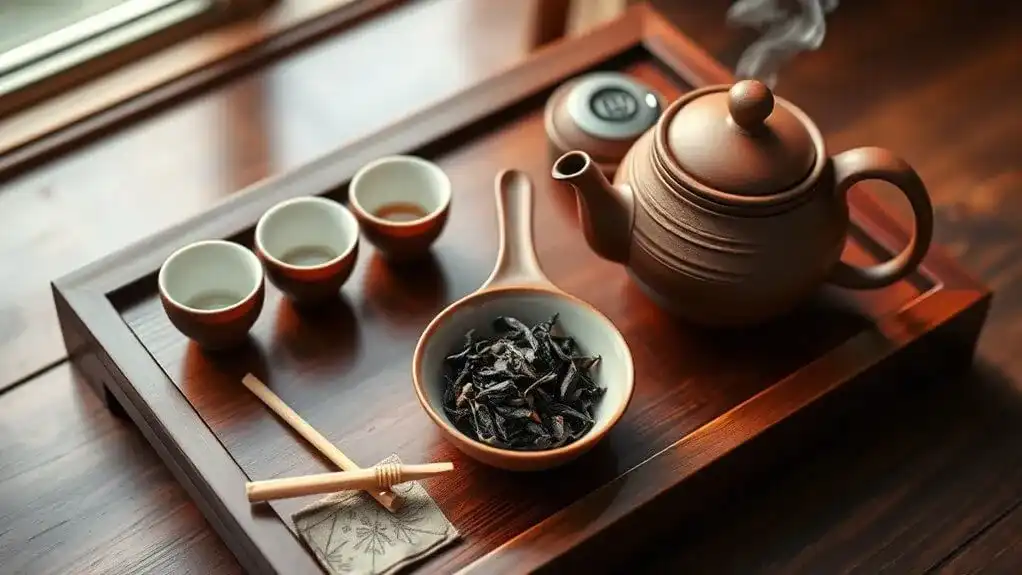
With the proper teaware in place, mastering Chinese tea service depends on selecting the right varieties for the ceremony. Premium tea selections come from the Camellia sinensis plant, with each type offering distinct flavor profiles that range from sweet and nutty to bold and smoky.
Chinese teas fall into several categories, including green, white, black, oolong, and pu-erh. Among green teas, Longjing stands out for its chestnut notes, while Biluochun offers a fruity, floral character. These green teas undergo minimal oxidation to preserve their natural qualities. The processing method greatly influences the final product, with techniques like pan-firing and sun-drying helping preserve the tea's natural antioxidants. China's rich tea culture history spans over three thousand years, shaping the way these teas are cultivated and prepared. Regional variations also play an essential role, as different provinces produce teas with unique characteristics based on their specific cultivars and local growing conditions. For optimal brewing results, use water heated to 175 to 185 degrees to preserve the delicate flavors of green tea varieties.
Mastering the Art of Brewing and Infusion
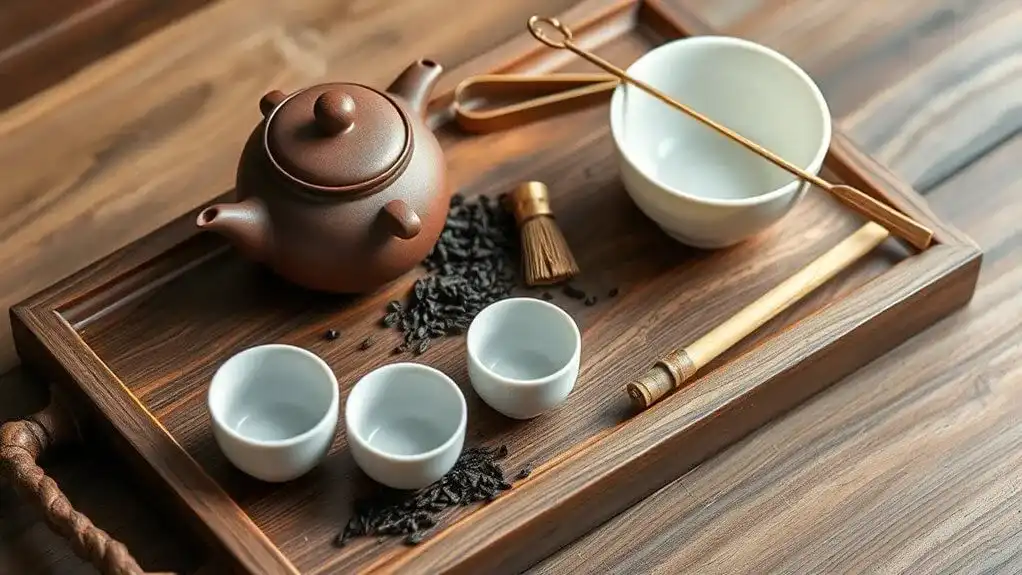
Once you've selected premium tea varieties, mastering the traditional Chinese brewing process requires understanding specialized equipment and precise techniques. Essential tools include the gaiwan for brewing, yixing teapot for specific tea types, and a cha hei pitcher for serving. Electric kettles are recommended for achieving consistent water temperatures.
The core brewing techniques focus on ideal flavor extraction through controlled variables. These include maintaining high leaf-to-water ratios, precise water temperatures, and short steeping times. This method originated in Chaozhou region of Guangdong Province to enhance tea quality. The process typically begins with a quick rinse of the leaves, followed by multiple short infusions ranging from 5-15 seconds. Each subsequent brewing reveals different layers of the tea's character. This method of multiple steepings is fundamental to highly skilled tea preparation.
Success depends on skillful pouring and careful timing. The method emphasizes using clean equipment, preventing over-steeping, and creating an engaging sensory experience for all participants.
The Cultural Significance and Modern Practice
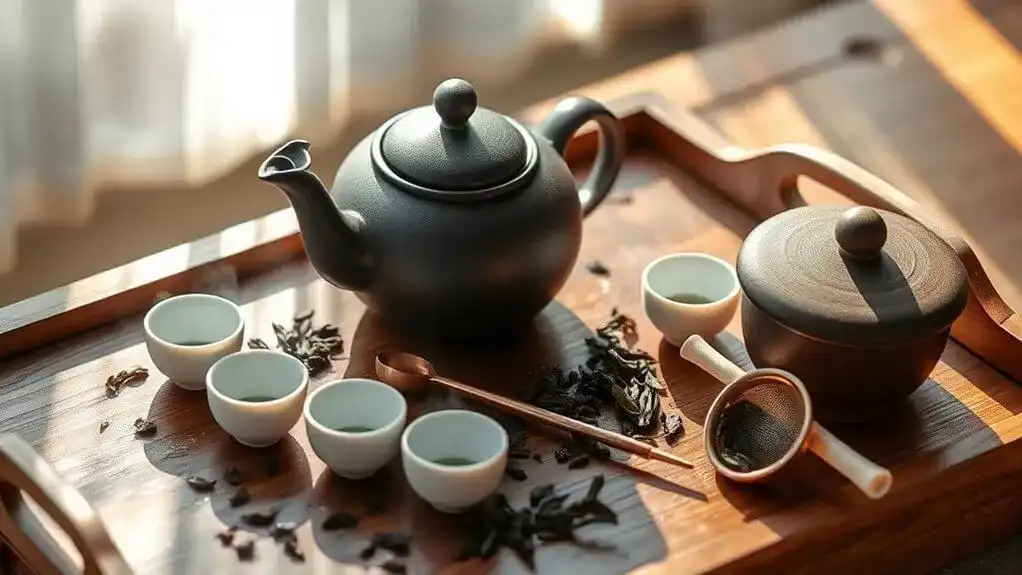
Dating back to the Sung Dynasty, Gong Fu Cha represents more than just a method of brewing tea – it embodies the philosophical and aesthetic principles of Chinese culture. This practice emphasizes cultural mindfulness through the intentional appreciation of tea's aroma, flavor, and appearance, creating a meditative escape from life's pressures. Dedicated practitioners often spend years mastering the art of skillful tea preparation. Each steeping session engages the senses through multiple short infusions. The traditional process requires fresh filtered water to achieve optimal taste and clarity.
While traditionally associated with specific regions and tea varieties, modern Gong Fu Cha has evolved to become more accessible to the global tea community. Today's practitioners can explore various teas beyond oolong and pu'erh, using adaptable setups that maintain the ceremony's core principles. The rise of Chinese teashops and online resources has democratized this ancient art, allowing enthusiasts worldwide to embrace its transformative qualities while preserving its emphasis on precision, awareness, and the cultivation of 'cha qi' (tea energy).
Conclusion
Just like upgrading from dial-up internet to high-speed broadband, mastering gongfu cha transforms one's connection to tea drinking. The traditional Chinese practice isn't merely about brewing leaves – it's a mindful celebration of culture, craftsmanship, and community that continues to captivate tea enthusiasts worldwide. Through careful attention to detail and respect for time-honored techniques, today's practitioners keep this ancient art form vibrantly alive.
